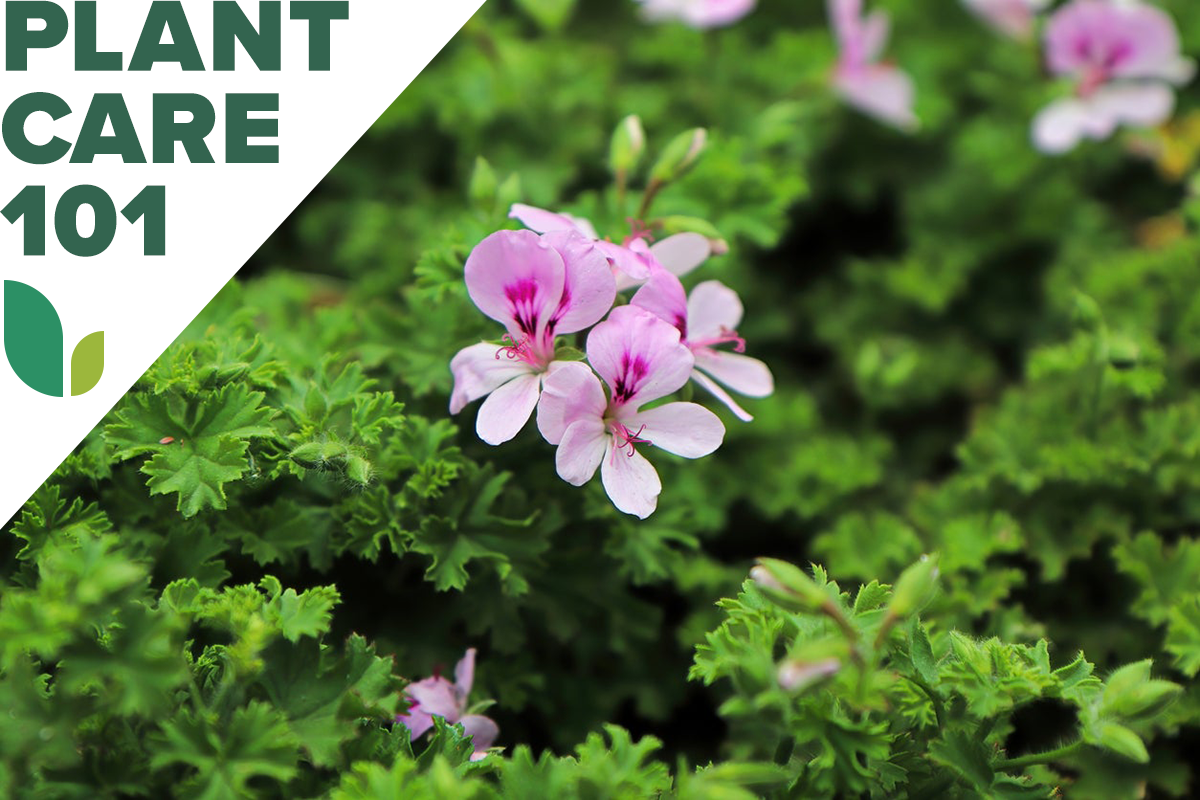We may earn revenue from the products available on this page and participate in affiliate programs. Learn More ›
The supposedly mosquito-repellent citronella plant contains only a tiny amount of citronella. The citronella used in repellents is actually derived from citronella grass, an entirely different plant species. Although citronella plants were originally marketed as a cross between a pelargonium and that grass, those claims proved untrue.
Although studies have determined that the presence of citronella plants (aka “mosquito plants”) has no effect on mosquitoes, the citronella plant is still worth growing for its lacily lobed leaves, citrusy fragrance, and pinkish-lavender blooms. Citronella plant care is similar to that required by other scented geraniums.
Growing Citronella at a Glance
Common Name: Citronella plant
Scientific Name: Pelargonium citrosum ‘Van Leenii’
Hardiness Zone: 9 to 12
Soil: Fast-draining, pH 7
Light: Full sun to partial shade
Water: Low
Food: Balanced plant food
Propagation: Softwood cuttings
Safety: Toxic to pets
Citronella Plant Characteristics
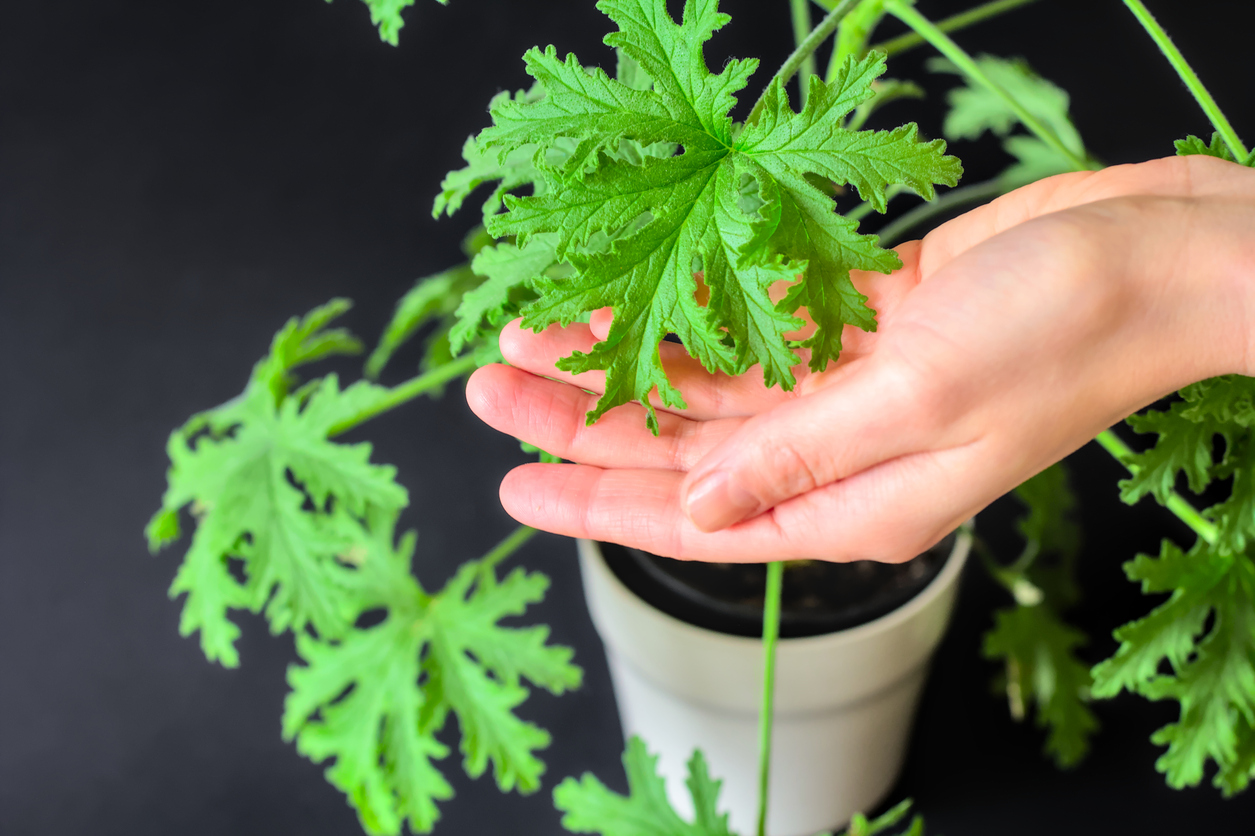
How big do citronella plants get? They can reach heights as tall as 5 feet when grown as in-ground perennials in frost-free areas of USDA Zones 9 through 12. North of Zone 9, however, citronella plants must either be grown as annuals or placed in containers and moved indoors over winter. Under those conditions, they probably won’t surpass 2 feet in height.
When it comes to citronella plant types, there is only one, though there are a variety of citronella grasses. The citronella plant’s foliage is lobed and lacey in appearance, as well as carrying a strong citrus scent. The citronella flower is small and lavender, and its 5-petal shape is similar to other pelargonium blooms, with burgundy veins decorating the upper two petals. These blooms generally appear in spring and early summer.
Recommended Citronella Varieties
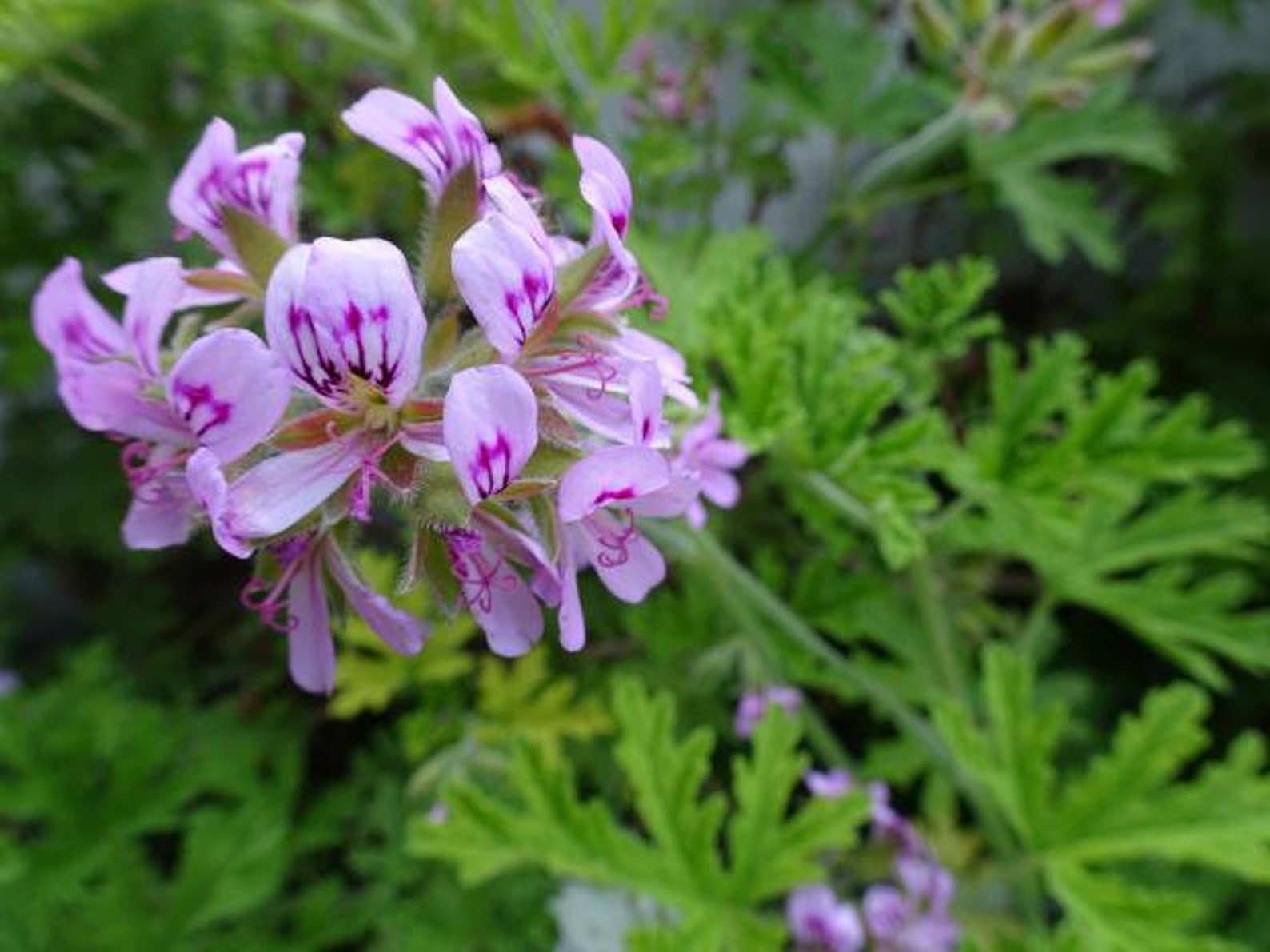
Although there is only one type of citronella plant, it falls within the broader category of scented geraniums. These differ from the popular geraniums, which are bred for their showy flowers. Scented geranium varieties are instead bred for their fragrant foliage. If you want to ensure you get a citronella plant, just look for the full name of Pelargonium citrosum ‘Van Leenii’ to be certain.
RELATED: Annuals vs. Perennials: 8 Important Considerations Every Home Gardener Should Know
Planting Citronella
When considering how to grow citronella mosquito plant, keep in mind that it likes the same conditions as other annual geraniums (pelargoniums). The question of when and where to plant it will depend on your growing zone.
When is the best time to plant citronella?
If you plan to grow citronella as an annual, transplant it into the ground after your last frost date in spring—about the same time you set out your tomatoes. Gardeners who live in frost-free zones in the South may want to plant this pelargonium in autumn instead, since annual geraniums like cool nights and tend to resent daytime temperatures above 85 degrees.
Where can citronella grow?
In the North, choose a position in full sun with well-draining, neutral soil (meaning a pH near 7). In the hottest areas of the South, opt for a site that receives at least 4 hours of sun in the morning followed by afternoon shade to protect the plant from excessive heat.
How do you plant citronella?
Once you have chosen your location, follow these steps to set out your plant:
- If your citronella has been growing indoors, harden it off by exposing it to outdoor conditions gradually over a period of a week or two.
- Dig a hole the same size as the height of the plant’s root ball and slightly wider than its width.
- Water the plant and remove it from its pot. If it appears rootbound, ease those roots apart before placing the root ball in the hole and filling in the soil around it.
- If you have more than one citronella plant, place them about 1 foot apart from one another.
Can you grow citronella in containers?
Yes, as with most pelargoniums, citronella can thrive in containers. When contemplating how to care for citronella plants in pots, start them out in 4- to 6-inch containers—or whatever diameter is most appropriate for their size—filled with a light and fluffy standard potting mix or a mix of half peat and half perlite.
Containers will allow you to move the plants as necessary for more favorable conditions. If they seem to be scorching under too much heat, for example, shift them to a location where they will be shaded during midday and the hottest part of the afternoon.
Watering Citronellas
An important part of how to care for citronella plants is to avoid overwatering them. During the growing season, allow the surface of your citronella container’s soil to dry out before you water the plant again. A plant growing in the ground should be watered when its soil appears dry 2 inches down, as should a plant growing under cooler, dimmer conditions indoors during winter.
Water in the morning, if possible, so that the foliage dries off quickly. Ideally, avoid splashing the leaves at all, which can lead to fungus diseases. Especially avoid watering the plant too often if you keep it under cool conditions during winter. Otherwise, it might succumb to rot.
Fertilizing Citronella
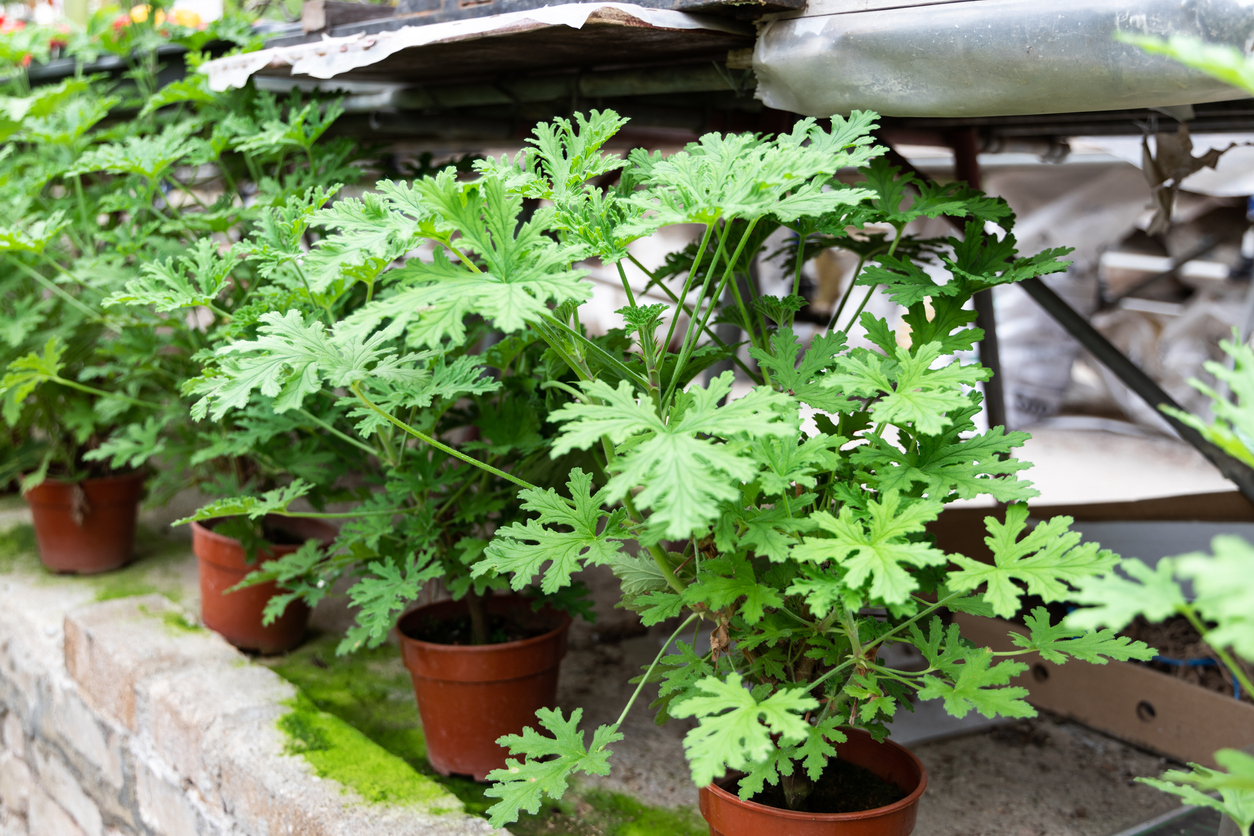
When caring for citronella plants, don’t forget their need for food. Before setting them out, mix 10-10-10 fertilizer into their soil, using about 4 ounces per 25 square feet. If you want to encourage blooms, try a 10-20-10 formula instead at the same rate. Alternatively, use an organic fertilizer, such as 5-5-5 at the amount recommended on the product’s label.
Plants in containers should be fed with a balanced, water-soluble, micronutrient-enriched plant food every 2 weeks from spring through autumn. If your plant food doesn’t contain micronutrients, you might want to supplement it with magnesium.
Pruning Citronella
When caring for a citronella plant, snip or pinch out the tip—the two uppermost leaves and the point between them—of each shoot to encourage those shoots to branch out more. Then continue to pinch the new tips about once per month during the growing season to keep the plant full and compact rather than tall and rangy.
It’s also a good idea to prune citronellas when you bring them indoors in autumn, and again when you take them back outdoors in spring if they have been growing on a sunny windowsill. Simply cut them back by a third to one half. If your plant flowers, snip off the faded blooms, too, to make the plant produce more.
RELATED: 20 Outdoor Plants You Can Propagate From Cuttings
Propagating Citronella Plants
Take softwood cuttings from your citronella plant in spring when it begins to put out healthy new growth. Snip the top 3 inches from each shoot, cutting just below a leaf node. After removing the lower leaves of the cuttings, dip their bases in a rooting hormone liquid or powder, and pot them up in a sterile “soil” such as seed starting mix.
Keep them in a bright, warm location out of direct sun until they root, which should take about a month. If you place an inverted plastic bag over your cuttings to maintain humidity, allow it to hang loose rather than closing it; pelargonium cuttings rot easily when kept too damp.
Safety Considerations
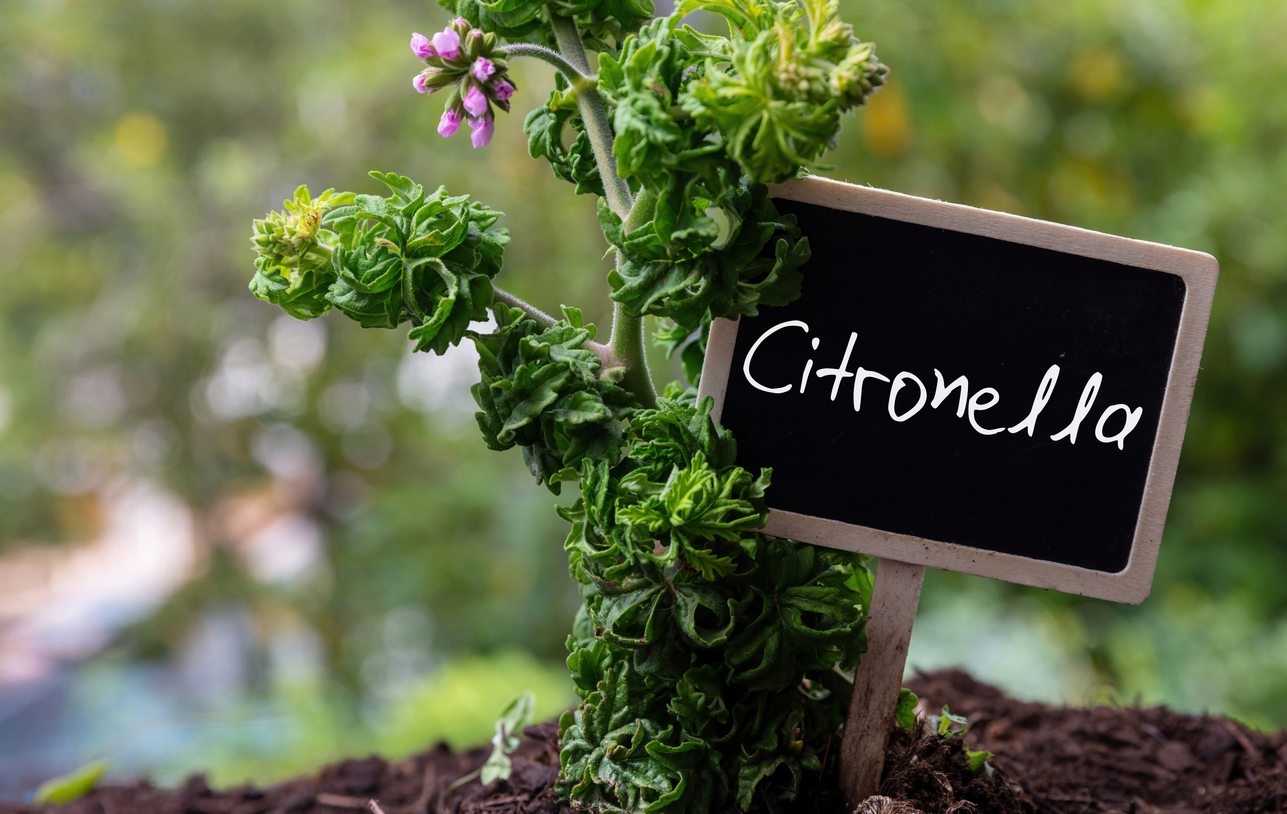
Scented geraniums such as citronella are generally considered nontoxic to humans. In fact, some types—such as the rose-scented variety—are used in cooking. However, their sap reportedly can irritate the skin of some individuals, so it’s a good idea to wear gloves while pruning them.
Also, the oils in scented geranium foliage can cause vomiting and other symptoms in pets who consume those leaves. The ASPCA considers scented geraniums toxic to both dogs and cats. Fortunately, pets usually don’t like citrus odors, which often are used to repel animals. However, if your pet is the exception and enjoys nibbling on citronella leaves, keep the plant out of reach.
Potential Pests and Diseases
Scented geraniums such as citronellas are generally pest-proof plants and free of disease when healthy. If stressed, they may suffer from aphids or whiteflies, however.
Aphids, which resemble green lice, can be sprayed off of citronella plants with strong streams of water. You may be able to squirt off the adult whiteflies, too. Afterward, you should spray the plant with insecticidal soap, repeating the treatment every week or so until all of the flies have flown. Just be sure to spray water or insecticide in the morning to give your plants time to dry off before nightfall.
RELATED: Try Scents to Send Pests Packing From Your Garden
Overwintering Citronella
Part of how to take care of citronella plants is bringing them indoors for the winter in USDA Zones lower than 9.
When is the best time to bring citronella indoors?
Once nighttime temperatures drop to 45 degrees Fahrenheit in autumn, bring your citronella plant indoors. Keep in mind that if you want the plant to bloom, you should provide it with the cooler winter conditions specified below. If not, you can keep it at typical household temperatures.
How do you overwinter citronella?
Since caring for a citronella plant includes winter protection in most zones, you can provide that by taking the following steps:
- Cut the plant back to between 6 and 8 inches tall.
- Set it on a sunny south- or west-facing windowsill in a location where the temperature remains between 45 and 55 degrees Fahrenheit during winter—such as an unheated sunporch or garage. Move it to a warmer location in spring.
- Water the plant occasionally, allowing the soil to dry out a couple inches down before you water it again.
Looking for more outdoor container plants? Check out our articles on the best container plants for full sun, shade-loving container plants, and trees and shrubs that thrive in containers.

